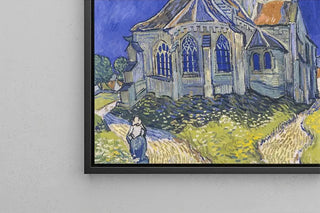Saint Augustine at the Council of Carthage reconciles Catholics and Donatists - Jules-Eugène Lenepveu

Saint Augustine at the Council of Carthage reconciles Catholics and Donatists: a scene of theological dialogue
In "Saint Augustine at the Council of Carthage reconciles Catholics and Donatists," Jules-Eugène Lenepveu depicts a key moment in religious history, where dialogue and reconciliation are at the heart of the scene. The canvas illustrates Saint Augustine, an iconic figure of Christianity, surrounded by characters engaged in discussion. The rich colors and meticulous details demonstrate Lenepveu's technical mastery, creating a solemn and reflective atmosphere. This artwork invites contemplation of the spiritual and sociopolitical issues of the time, while paying tribute to the depth of Augustine's thought.
Jules-Eugène Lenepveu: an artist committed to his era
Jules-Eugène Lenepveu, active in the 19th century, is recognized for his historical and religious works. Trained at the École des Beaux-Arts in Paris, he draws inspiration from the great masters of the past while incorporating contemporary themes. Lenepveu is particularly interested in questions of faith and morality, which is reflected in his works. As a committed artist, he seeks to convey profound messages through his paintings, thus contributing to the spiritual education of his audience. His work on Saint Augustine demonstrates his interest in theological debates and their impact on society of his time.
A decorative acquisition with multiple assets
The art print of "Saint Augustine at the Council of Carthage reconciles Catholics and Donatists" is a valuable addition to any art collection, bringing a historical and spiritual dimension to your decor. Whether in an office, a library, or a living room, this piece encourages reflection and dialogue. Its high-quality printing ensures that every detail of the original work is preserved, offering undeniable aesthetic appeal. By choosing this canvas, you enrich your space with culture and meaning, while paying homage to Lenepveu's artistic legacy and the importance of Saint Augustine in the history of Christian thought.

Saint Augustine at the Council of Carthage reconciles Catholics and Donatists: a scene of theological dialogue
In "Saint Augustine at the Council of Carthage reconciles Catholics and Donatists," Jules-Eugène Lenepveu depicts a key moment in religious history, where dialogue and reconciliation are at the heart of the scene. The canvas illustrates Saint Augustine, an iconic figure of Christianity, surrounded by characters engaged in discussion. The rich colors and meticulous details demonstrate Lenepveu's technical mastery, creating a solemn and reflective atmosphere. This artwork invites contemplation of the spiritual and sociopolitical issues of the time, while paying tribute to the depth of Augustine's thought.
Jules-Eugène Lenepveu: an artist committed to his era
Jules-Eugène Lenepveu, active in the 19th century, is recognized for his historical and religious works. Trained at the École des Beaux-Arts in Paris, he draws inspiration from the great masters of the past while incorporating contemporary themes. Lenepveu is particularly interested in questions of faith and morality, which is reflected in his works. As a committed artist, he seeks to convey profound messages through his paintings, thus contributing to the spiritual education of his audience. His work on Saint Augustine demonstrates his interest in theological debates and their impact on society of his time.
A decorative acquisition with multiple assets
The art print of "Saint Augustine at the Council of Carthage reconciles Catholics and Donatists" is a valuable addition to any art collection, bringing a historical and spiritual dimension to your decor. Whether in an office, a library, or a living room, this piece encourages reflection and dialogue. Its high-quality printing ensures that every detail of the original work is preserved, offering undeniable aesthetic appeal. By choosing this canvas, you enrich your space with culture and meaning, while paying homage to Lenepveu's artistic legacy and the importance of Saint Augustine in the history of Christian thought.





